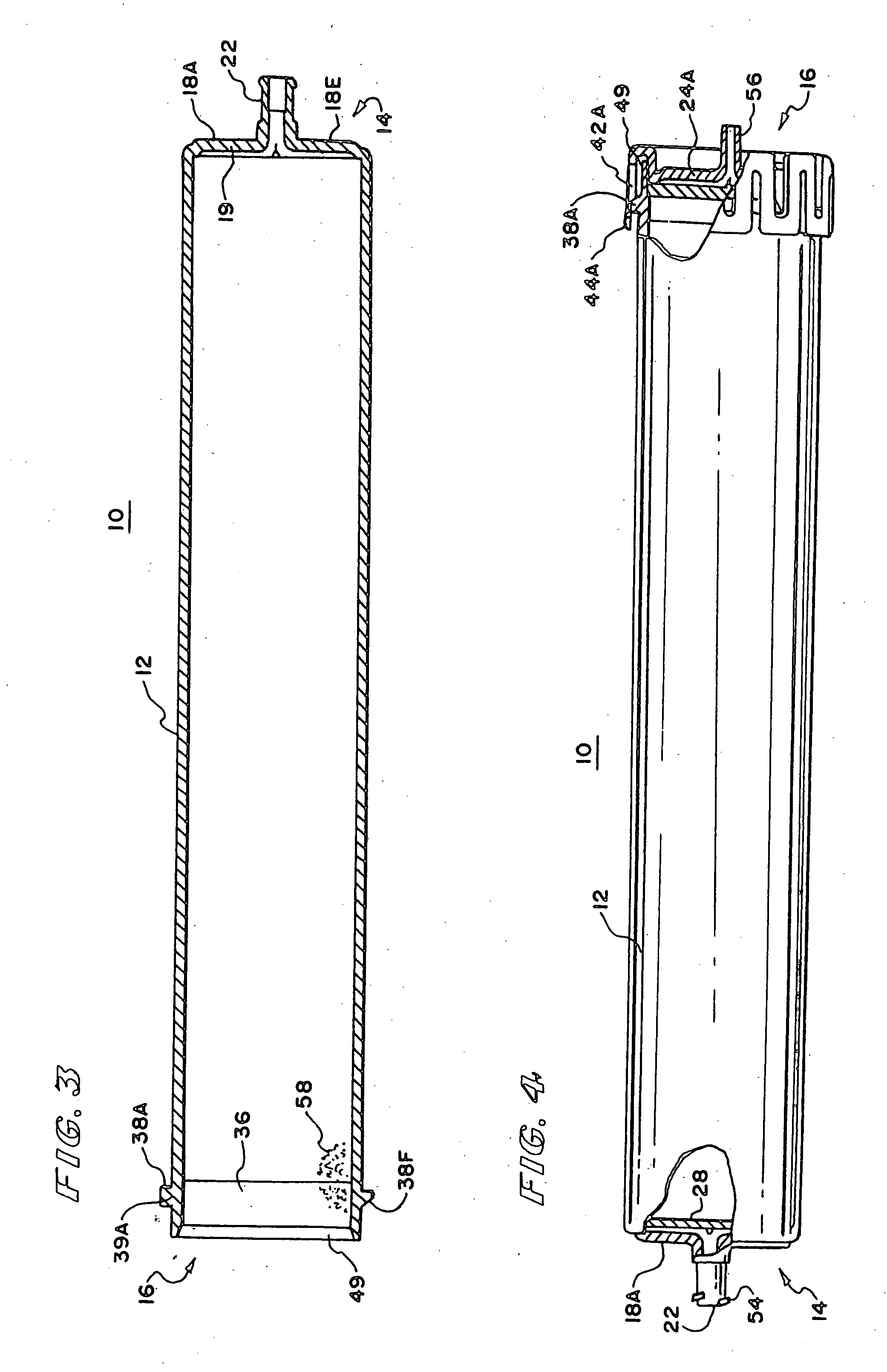Disposable chromatographic columns
a chromatographic column and chromatographic technology, applied in the field of chromatography, can solve the problems of less uniform packing, more subject to peak spreading, more expensive than desirable assembly, etc., and achieve the effect of avoiding gaps that degrade the performance of the column, avoiding uneven fluid distribution, and sufficient open spaces
- Summary
- Abstract
- Description
- Claims
- Application Information
AI Technical Summary
Benefits of technology
Problems solved by technology
Method used
Image
Examples
Embodiment Construction
[0054] In FIG. 1, there is shown a column 10 having a column body 12, an inlet end 14 and an outlet end 16 with the direction of flow of fluid being from the inlet end 14 through packing material 58 (FIG. 3) in the tubular column body 12 and out of the outlet end 16 in that order. The inlet end 14 includes a plurality of radially extending inlet channels 18A-18H, a base plate or end portion 19 and an inlet port 22. The column body 12 has a side wall portion integrally molded with a first end (inlet end 14) and has a second molded open end (outlet end 16) with outlet and inlet ports molded in the end members. At least one of the first and second ends have channels molded in them. The inlet port 22 includes a female luer connection partly threaded at 54 to connect to a source of fluid through a connector which in some embodiments may be spring-biased (not shown in FIG. 1) and extends as a hollow cylindrical tube through the center of the base plate 19 where it communicates with the in...
PUM
| Property | Measurement | Unit |
|---|---|---|
| Pressure | aaaaa | aaaaa |
| Temperature | aaaaa | aaaaa |
| Thickness | aaaaa | aaaaa |
Abstract
Description
Claims
Application Information
 Login to View More
Login to View More - R&D
- Intellectual Property
- Life Sciences
- Materials
- Tech Scout
- Unparalleled Data Quality
- Higher Quality Content
- 60% Fewer Hallucinations
Browse by: Latest US Patents, China's latest patents, Technical Efficacy Thesaurus, Application Domain, Technology Topic, Popular Technical Reports.
© 2025 PatSnap. All rights reserved.Legal|Privacy policy|Modern Slavery Act Transparency Statement|Sitemap|About US| Contact US: help@patsnap.com



